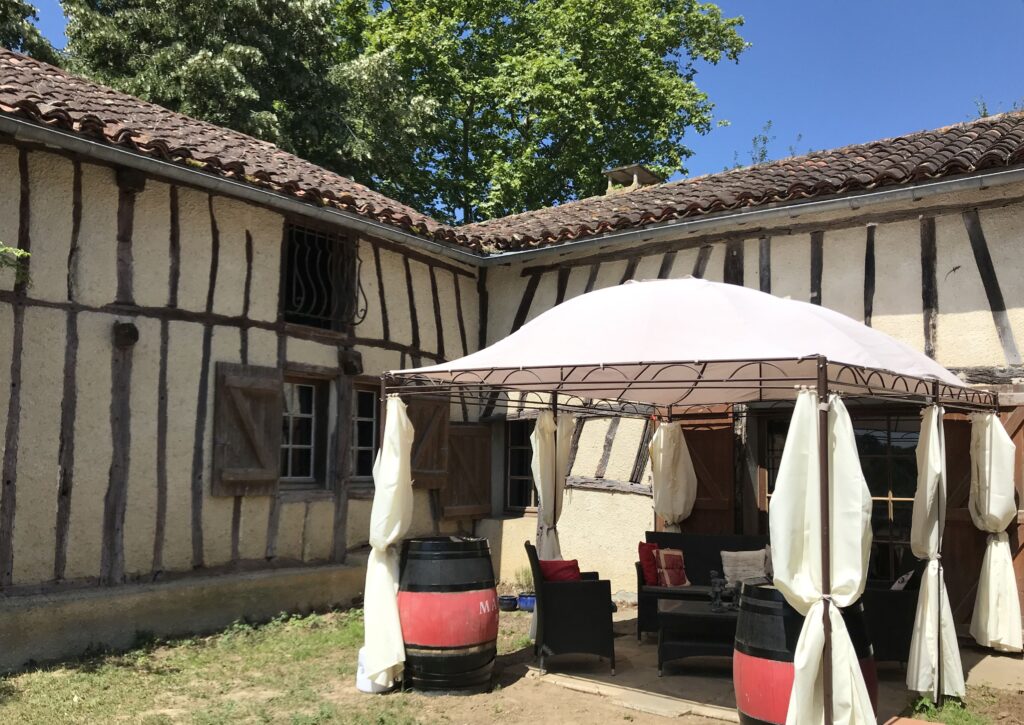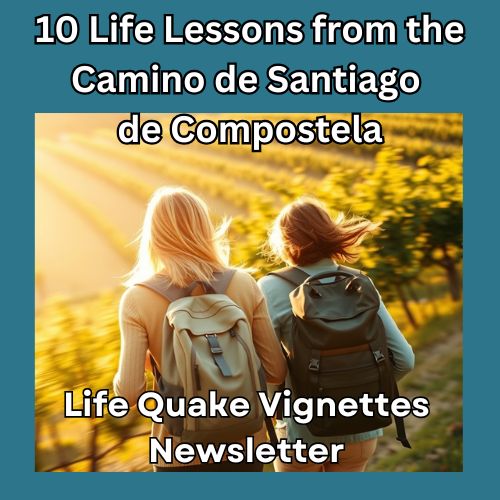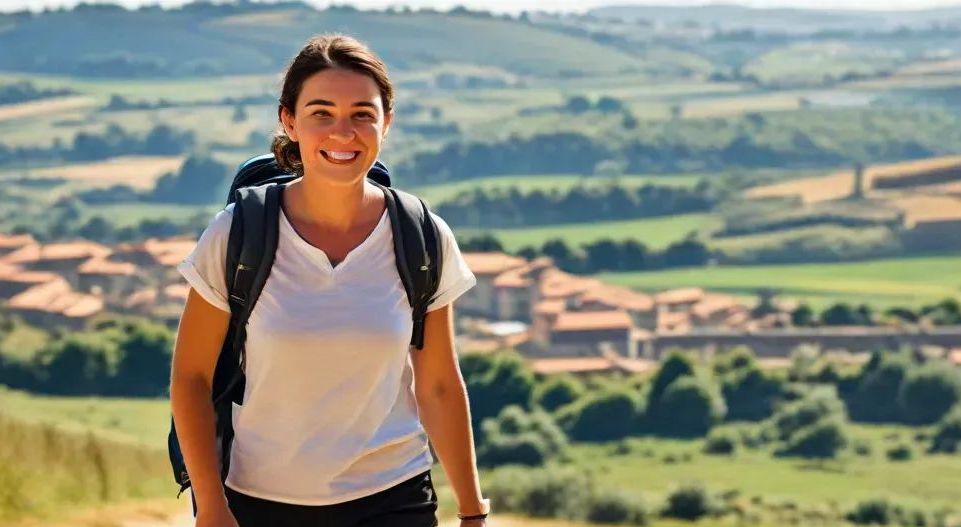Quick Summary
Hosting a retreat at home sounds easy – intimate gatherings, no venue rental fees, complete creative control. But before you transform your living room into a meditation sanctuary, consider the hidden challenges: blurred professional boundaries, neighbourly relations, insurance gaps, logistical nightmares, and the exhausting dual role of host and facilitator. Sometimes the most generous thing you can do for your participants (and yourself) is choosing the right space from the start.
The Allure of @Home
Picture this: soft morning light streaming through your favourite windows, the familiar comfort of your own space, and a small group of seekers gathered in your living room. No venue rental fees, no time restrictions, no stern facility managers hovering with clipboards. Just you, your vision, and the sanctuary you’ve already created.
It’s a seductive idea, isn’t it? The @home retreat.
Every wellness entrepreneur has flirted with this fantasy at least once. Your house becomes the vessel for healing, your kitchen the heart of nourishment, your garden the backdrop for breakthrough moments. You imagine participants leaving not just changed, but carrying a piece of your authentic energy with them forever.
But here’s what nobody tells you about turning your personal sanctuary into a professional space: sometimes the most beautiful dreams become the most complicated realities.
Molly’s Story: When Dreams Meet Reality
Molly Grover had it all figured out – or so she thought.
The idea struck her on a Tuesday morning while she was sipping lavender tea in her sunlit conservatory. The autumn light danced across her meditation cushions, and the gentle hum of her neighbour’s lawnmower created an oddly soothing backdrop. “This is perfect,” she whispered to herself, inhaling the lingering scent of last night’s dinner – rosemary chicken that still perfumed the air with herbs and warmth. “Why would I rent some sterile community centre when I have this?”
Within a week, Molly had crafted the perfect retreat: “Sacred Sisterhood: A Weekend of Healing at Home.” She envisioned eight women gathered in her cosy living space, sharing stories over homemade soup, practising gentle yoga on her Persian rug, and finding their voices through journaling exercises by her fireplace.
The marketing copy practically wrote itself. The photos of her space looked magazine-worthy. The early bird pricing filled her bank account faster than she’d expected. Molly felt like she’d cracked some secret code – why didn’t more people do this?
Friday afternoon, reality knocked on her door. Literally.
Sarah, the first participant, arrived thirty minutes early with three suitcases, a yoga mat longer than Molly’s hallway, and dietary restrictions she’d forgotten to mention. “I hope you don’t mind,” Sarah chirped, wheeling her luggage across Molly’s freshly vacuumed carpet, “but I brought my own organic pillow. Hotel pillows trigger my sensitivities.”
Before Molly could respond, two more cars pulled into her driveway. Then another. Her neighbour, Mrs. Henderson, appeared at her fence line with the pursed-lip expression that meant trouble. The sound of car doors slamming echoed like gunshots in the quiet residential street.
“Excuse me,” Mrs. Henderson called over, her voice sharp enough to cut glass, “but are you running some kind of business out of your house?”
Molly’s stomach dropped like a stone in water. In all her dreamy planning, she’d somehow forgotten that her Victorian cottage sat in the middle of a neighbourhood where the loudest sound was usually someone’s recycling bin being wheeled to the curb.
Inside, the first session was beginning. Molly had arranged her furniture to create an intimate circle, but with eight women plus herself, the space felt more like a sardine can than a sanctuary. The participant in the corner kept bumping her elbow against the bookshelf every time she gestured. Another woman’s knees were practically touching the coffee table.
“Let’s begin with some deep breathing,” Molly suggested, trying to channel the serene facilitator she’d imagined herself being. But as nine women inhaled deeply in her small living room, the oxygen seemed to evaporate. The lavender essential oil she’d diffused earlier now felt suffocating rather than soothing.
Then came the sounds.
Her upstairs neighbour – the one she’d barely spoken to in two years – apparently chose that exact moment to rearrange furniture. Each scrape and thud reverberated through the ceiling like thunder. The participants’ eyes kept darting upward, their meditation interrupted by what sounded like a bowling ball being dropped repeatedly on hardwood floors.
“That’s just… my neighbour,” Molly whispered, her cheeks burning with embarrassment. “He’s usually very quiet.”
But the universe wasn’t finished with its comedy of errors. During the afternoon sharing circle, just as participant number three was tearfully opening up about her recent divorce, Molly’s husband arrived home from his business trip. She heard his key in the lock, then his confused voice: “Whose cars are all over our driveway?”
The intimate healing space suddenly felt like a fishbowl. Her husband appeared in the doorway, travel-wrinkled and bewildered, holding his suitcase like a shield. Eight pairs of eyes turned toward him. The woman who’d been sharing about her divorce stopped mid-sentence, her vulnerability hanging in the air like smoke.
“Oh! Hi, everyone,” he stammered. “I’ll just… I’ll go upstairs.”
His footsteps creaked across the ceiling for the next hour, punctuated by the sound of the shower running and what sounded like a conference call that had apparently been scheduled for precisely the wrong time.
Saturday morning brought new challenges. The kitchen that had seemed so spacious for her family of two suddenly felt microscopic when faced with preparing breakfast for eight women with varying dietary needs. Gluten-free pancakes competed for pan space with dairy-free alternatives, while the coffee maker worked overtime, filling the air with the bitter scent of over-extraction.
“Do you have any almond milk?” asked one participant.
“Is this bread organic?” wondered another.
“I’m actually doing a juice cleanse, so I’ll just need hot water with lemon,” announced a third.
Molly found herself running a short-order restaurant instead of facilitating transformation. Her carefully planned morning meditation was pushed back thirty minutes, then forty-five, as she juggled breakfast preparations with the growing line for her single guest bathroom.
The afternoon yoga session revealed another oversight. Her beautiful hardwood floors, perfect for daily life, became a slip hazard when eight yoga mats were spread across different levels and textures. The participant near the fireplace couldn’t extend her arms without risking a collision with the mantle. The woman by the window kept squinting against the afternoon sun that Molly had never noticed was so blindingly bright at exactly 3 PM.
“Should I close the blinds?” Molly asked, interrupting her own guidance.
“But then it’s too dark,” someone replied.
“Maybe if we moved the mats?”
“There’s no room to move them.”
By Saturday evening, Molly was running on fumes and instant coffee. Her house – her sanctuary – felt foreign and overcrowded. Every corner held evidence of the weekend: yoga props stacked against her dining room wall, extra bedding piled on her study chair, water glasses abandoned on surfaces she’d never considered as water glass repositories.
The final blow came during the closing circle. As emotions ran high and participants shared their breakthrough moments, Mrs. Henderson knocked on the door. Not a gentle tap – a firm, official knock that made everyone freeze mid-sentence.
“I’m sorry to interrupt,” Mrs. Henderson announced when Molly answered, “but I’ve contacted the homeowners association. There are noise ordinances and parking restrictions, and frankly, this level of activity isn’t appropriate for a residential street.”
The sacred circle became an awkward silence. The container Molly had worked so hard to create cracked open like an egg, spilling intimacy onto the harsh ground of neighbourhood politics.
As participants packed up Sunday morning, their goodbye hugs felt different – sympathetic rather than grateful. They’d had breakthroughs, yes, but not the kind Molly had envisioned. They’d learned about resilience by watching her navigate impossible logistics. They’d practised patience while waiting for bathroom access. They’d discovered adaptability when the meditation moved to the backyard due to neighbour noise.
“Thank you for such an… authentic experience,” one woman said, and Molly couldn’t tell if it was a compliment or a condolence.
That evening, as Molly sat in her empty living room surrounded by the lingering scent of lavender and the phantom sounds of whispered conversations, she realised something profound: the most loving thing she could have done for her participants wasn’t sharing her personal space – it was choosing the right space for their collective journey.
The Hidden Challenges of Home Retreats
Molly’s experience illuminates the complex realities that lurk beneath the surface of the home retreat dream. What seems like the most natural, economical choice often becomes a masterclass in unexpected challenges.
Space and Environmental Battles
Your living room might feel spacious for daily life, but add eight retreat participants and suddenly it’s a game of human Tetris. Every piece of furniture becomes an obstacle, every corner a compromise. The acoustics that work perfectly for intimate family conversations can turn group sharing into an echo chamber or, conversely, make it impossible for everyone to hear.
Then there’s the sensory chaos. Your home has a smell – we all do – and while it might be comforting to you, it can be overwhelming or distracting to others. The neighbours’ Saturday morning lawn care routine, the garbage truck’s weekly symphony, the teenager next door practising drums – all the sounds that fade into your daily background suddenly become intrusive elements in someone else’s healing journey.
The Professional Boundary Bermuda Triangle
When you host in your personal space, the lines between facilitator and homeowner, between professional container and private sanctuary, become hopelessly blurred. Participants might feel comfortable rummaging through your kitchen cupboards or commenting on your personal belongings. Your family’s privacy evaporates, and your role shifts from retreat leader to hotel manager, chef, and housekeeper.
This boundary confusion works both ways. It becomes nearly impossible to maintain the professional distance that allows participants to project onto you what they need for their healing. Instead of being a neutral vessel for transformation, you become Molly-who-has-that-interesting-book-collection and whose-husband-works-in-finance.
The Logistics Labyrinth
Every retreat requires countless behind-the-scenes coordination, but home retreats multiply this exponentially. You’re not just planning content and activities – you’re meal planning for dietary restrictions with your home kitchen equipment, managing parking in a residential area, coordinating bathroom access for multiple people, and ensuring everyone has comfortable seating without rearranging your entire living space.
The insurance implications alone can be staggering. Most homeowner’s policies don’t cover business activities or injuries to paying participants. The liability exposure is real, and the legal grey area around residential commercial activities can vary dramatically by location.
Neighbour Relations: The Unwelcome Plot Twist
Nothing kills the retreat vibe quite like a neighbour complaint. Residential areas have rhythms and expectations that multiple cars, increased foot traffic, and group activities can disrupt. Even the most understanding neighbours might draw the line at weekend workshops that generate noise or parking issues.
Local zoning laws often restrict or prohibit commercial activities in residential areas. What feels like sharing your healing space might technically violate local ordinances, creating legal complications you never anticipated.
The Energy Drain Dilemma
Perhaps most challenging is the impossible dual role of host and facilitator. When you’re worrying about whether there’s enough toilet paper, if the coffee is hot enough, and whether Mrs. Henderson is reaching for her phone to call the authorities, you can’t fully show up as the transformational guide your participants need.
Your own energy becomes scattered across logistics instead of being focused on holding space. The very thing that makes home retreats appealing – the personal, intimate setting – becomes the thing that prevents you from doing your best work.
FAQ: The Real Talk You Need
Q: Can’t I just start small and work out the kinks? A: Starting small helps with some logistics but doesn’t solve core issues like insurance liability, zoning restrictions, or neighbour relations. A retreat for 4 people still requires parking, still generates noise, and still blurs your professional boundaries. The problems scale with you.
Q: What if I have a large property or separate space? A: Larger properties can mitigate some space issues, but separate structures often require additional permits, insurance coverage, and safety compliance. You’re essentially creating a micro-retreat centre, which brings its own regulatory challenges.
Q: Isn’t renting venues expensive and impersonal? A: Venue rental costs pale in comparison to potential liability issues, neighbour complaints, or the hidden costs of insurance upgrades and permit applications. Professional venues also handle logistics so you can focus on facilitating. The “impersonal” space often becomes sacred through your guidance, not through familiar surroundings.
Q: What about online retreats from home? A: Online retreats eliminate many logistical challenges but introduce technical ones. Your home internet, lighting, and acoustic setup become critical. Plus, you’re still dealing with potential interruptions from family, neighbours, or delivery drivers – all visible to participants.
Q: How do I know if my area allows a home-based retreat business? A: Contact your local zoning office, homeowners association (if applicable), and insurance provider before making any commitments. Many areas have strict limits on residential and commercial activities, parking, and occupancy that can shut down your retreat plans quickly.
The Path Forward
Molly’s story isn’t meant to crush dreams – it’s meant to save you from costly mistakes. The impulse to share your sacred space comes from a beautiful place of generosity and authenticity. But sometimes the most generous thing we can do is choose the right container for transformation.
Great retreat leaders understand that environment matters as much as content. Professional venues might lack your personal touch, but they provide a neutral ground where magic can happen without logistical interference. They come with proper insurance, adequate facilities, and the legal framework to support your vision.
A Different Kind of Sacred Space
If Molly’s story resonates with you, perhaps it’s time to consider a different approach. Instead of trying to transform your home into a retreat centre, what if you explored a place that already embodies the tranquillity and transformation you’re seeking to create?
Here in the rolling hills of southwest France, our little farmhouse offers something unique: the sacred intimacy of a home setting with the professional framework of a dedicated retreat space. For more than a decade, I’ve been hosting retreats at home – learning through trial and error, neighbour negotiations, insurance upgrades, and countless logistical adventures that would make Molly’s story look like a gentle warm-up.
I’ve navigated the septic system crisis of 2022 (nothing says “holding sacred space” like emergency plumbing calls during a grief healing retreat). I’ve mastered the art of feeding 4 people with dietary restrictions using farmhouse kitchen equipment. I’ve learned which neighbours to charm with homemade jam, how to create outdoor meditation spaces without destroying period architecture, and why backup generators are worth their weight in enlightenment.
My Camino de Santiago walking retreats represent more than a decade of refinement – the evolution from enthusiastic home-retreat host to someone who understands that creating transformational experiences requires both heart and systems. The stress relief of gentle hiking along ancient pilgrimage paths, combined with accommodations that handle logistics seamlessly while maintaining that intimate, home-away-from-home feeling.
But here’s what makes this truly special: if you’re genuinely interested in hosting retreats from your own home, you’re welcome to join us not just as a participant, but as an observer of what it really takes to make it work. Come see firsthand how I’ve solved the challenges that derail most home retreat dreams. Watch the systems in action, from managing group dynamics in intimate spaces to creating boundaries that protect both facilitator energy and participant experience.
During your stay, you’ll witness the unsexy behind-the-scenes magic: how I prep meals for diverse dietary needs without becoming a short-order cook, manage the delicate dance of shared bathroom spaces, maintain professional boundaries while creating genuine intimacy, and navigate the thousand tiny details that separate transformational retreats from chaotic house parties.
You’ll also experience what happens when those systems work (fairly) seamlessly – when participants can drop into vulnerability without worrying about neighbour complaints, when facilitators can hold space fully because the container is professionally sound.













10 Powerful Life Lessons Learned While Walking the Camino de Santiago – a free guide filled with 10 not just “quaint anecdotes” or Instagram-worthy moments (though there are plenty of those) but real transformations from real people who walked the same insight-giving trail you might want to walk one day – Subscribe to my monthly newsletter to Download the Guide

“I am an experienced medical doctor – MBChB, MRCGP, NLP master pract cert, Transformational Life Coach (dip.) Life Story Coach (cert.) Stress Counselling (cert.) Med Hypnotherapy (dip.) and EAGALA (cert.) I may have an impressive number of letters after my name, and more than three decades of professional experience, but what qualifies me to excel at what I do is my intuitive understanding of my clients’ difficulties and my extensive personal experience of managing major life changes using strategies I developed over many years.” Dr M Montagu

